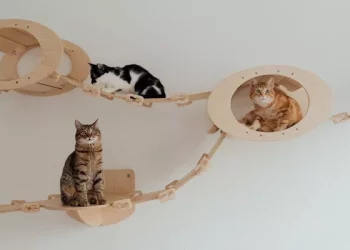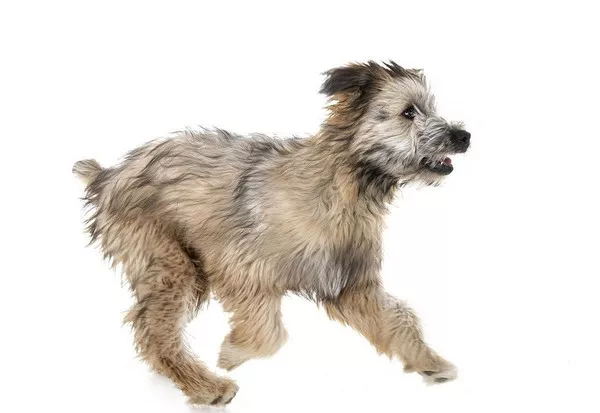Corn snakes (Pantherophis guttatus) are a species of non-venomous snake native to North America. They are popular pets due to their docile nature, beautiful coloration, and relatively easy care requirements. If you’re a new owner or considering adopting a corn snake, one of the key aspects of their care is understanding their hydration needs. Unlike mammals, which drink water through their mouths in a typical manner, snakes have unique ways of interacting with water. This article explores how corn snakes drink water, what types of water they prefer, and the role hydration plays in their health.
Understanding the Corn Snake’s Biology and Hydration Needs
Before diving into how corn snakes drink water, it’s important to understand some basic aspects of their biology. Corn snakes are reptiles, and like all reptiles, they are ectothermic, which means they rely on external sources of heat to regulate their body temperature. Their biology is adapted to living in environments that vary in humidity and temperature, which is reflected in their behavior when it comes to drinking water.
The Importance of Hydration for Corn Snakes
Hydration is essential for all living creatures, and corn snakes are no exception. Water is necessary for a range of biological functions, including digestion, circulation, temperature regulation, and waste excretion. If a corn snake is not properly hydrated, it may face health problems such as kidney failure, dehydration, or difficulty shedding. Therefore, understanding how corn snakes drink water and how to provide the right type of water is critical to their well-being.
How Do Snakes Drink Water?
Snakes, including corn snakes, do not drink water in the same way that mammals do. While mammals use their mouths to drink by sucking or lapping up water, snakes have a different approach. Snakes use their mouths to lap or absorb water through their tongue, but they also have specialized adaptations that help them get the water they need.
When a snake approaches a water source, it will typically use its tongue to flick around the surface of the water. This is not an attempt to “taste” the water as humans might think but instead serves a dual purpose. The snake uses its forked tongue to pick up chemicals and moisture from the environment, including the water. Once the tongue makes contact with the water, the snake can flick it back into its mouth and swallow the moisture. This method is effective because a snake’s tongue is highly sensitive to vibrations and chemicals, enabling it to find and drink water in its environment.
Key Steps Corn Snakes Follow When Drinking Water
Approaching the Water Dish: When you place a water dish in your corn snake’s enclosure, it may take some time for the snake to approach it. Corn snakes tend to be shy, and they might not drink immediately after their enclosure is cleaned or their water dish is replenished. However, it is important to ensure that the dish is large enough for the snake to submerge its face comfortably.
Flicking the Tongue: As the corn snake moves closer to the water dish, it will flick its tongue in and out. This is a behavior used by all snakes to explore their surroundings, gather sensory information, and assess potential prey or drinking sources. The moisture from the water dish will stick to the tongue’s surface.
Lapping the Water: Once the snake has assessed the water, it will likely start to lap it up. Using its tongue to bring water back into its mouth, the corn snake will drink in small amounts. Unlike mammals, they do not continuously drink but instead take a few swipes with their tongue before moving on.
Swallowing: After the corn snake has gathered moisture with its tongue, it will swallow the water in a manner similar to how it would consume prey. The water is ingested into the snake’s mouth and then passed down the esophagus into the stomach.
Hydration Maintenance: Corn snakes do not drink large quantities of water at one time. They tend to take small sips throughout the day or during their active hours, depending on their needs. They also have a unique ability to regulate water usage, conserving it for when it is most needed.
Factors Affecting Water Intake
While corn snakes drink in a fairly simple manner, their hydration needs can be influenced by several factors. Understanding these factors is crucial for providing the best environment for your pet corn snake.
1. Humidity Levels in the Enclosure
Corn snakes, like most snakes, require a specific level of humidity in their environment. If the air is too dry, the snake may not drink enough water or may struggle to maintain proper hydration. Conversely, if the humidity is too high, it can lead to issues such as skin shedding problems or respiratory issues.
A good rule of thumb for corn snakes is to maintain humidity levels between 40% and 60%. This can be adjusted based on the age and health of the snake. Juvenile corn snakes may require slightly higher humidity levels, especially during shedding periods.
To monitor and control humidity, you can use a hygrometer and adjust the substrate in the enclosure. Adding a humidity hide, which is a small area in the enclosure with higher humidity (usually using moss or damp paper towels), can help maintain proper hydration during shedding.
2. Water Quality
Like all pets, corn snakes need clean, fresh water. Water quality is crucial because stagnant or contaminated water can lead to health problems. Always ensure that the water in your snake’s enclosure is changed regularly (at least once every two to three days). Use filtered or dechlorinated water if possible. Tap water, which contains chlorine and other chemicals, can be harmful to snakes over time. You can buy reptile water conditioners to remove harmful chemicals or use bottled spring water as an alternative.
3. Temperature and Activity Levels
Corn snakes are more likely to drink water when they are active. If your snake is in a cooler, more sedentary state, it might not drink as often. Conversely, if it is more active and engaged in hunting or moving around its enclosure, it may drink more to replenish its fluids.
Temperature also plays a role in hydration. If the enclosure is too hot, the corn snake may become dehydrated more quickly, especially if it is not drinking enough water. A properly regulated temperature gradient (from 75°F to 85°F during the day) is essential for the snake’s health, and it helps in maintaining normal water consumption patterns.
4. Size and Age of the Snake
The size of your corn snake can impact its water needs. A juvenile corn snake, being smaller, will require less water than an adult. However, it’s important to note that while the amount of water needed will vary by size, corn snakes, in general, don’t drink large volumes at once. A small, shallow dish of water is typically sufficient for them.
Why Won’t My Corn Snake Drink Water?
If you find that your corn snake is not drinking water, there could be a few reasons behind it. Let’s explore some of the common causes and how to address them.
1. Stress or Environmental Changes
Corn snakes are sensitive to changes in their environment. If you have recently moved your snake to a new enclosure or changed its surroundings, it might be stressed and hesitant to drink. It may take a little time for your corn snake to adjust to the new environment, so ensure that everything is set up correctly, with proper temperatures, humidity, and a clean water dish.
2. Illness
If your corn snake is not drinking and shows other signs of illness (such as lethargy, difficulty shedding, or changes in eating habits), it could be a sign that the snake is sick. Dehydration caused by an underlying health condition such as a respiratory infection, parasites, or kidney problems may cause the snake to refuse water. In such cases, it is essential to consult a reptile veterinarian to get a proper diagnosis and treatment.
3. Water Dish Problems
Sometimes, the issue may not be the snake itself but rather the water dish. If the dish is too small or placed in a corner of the enclosure where the snake feels unsafe, it might avoid drinking. Ensure that the water dish is large enough for the snake to comfortably access, and place it in a calm and accessible location. You can also experiment with different types of water containers, such as shallow, wide dishes, or small, shallow pools.
4. Overhydration or Excessive Humidity
If the humidity in your corn snake’s enclosure is too high, it may feel too moist to drink water. In cases of excessive humidity, try adjusting the enclosure conditions to a more balanced range of humidity (around 50% to 60%). High humidity can also cause respiratory problems and other health issues, so it’s important to monitor and adjust the humidity regularly.
Conclusion
Understanding how corn snakes drink water and how to meet their hydration needs is an essential part of snake care. These snakes have unique ways of drinking compared to mammals, using their sensitive tongues to lap up water. Proper hydration, maintained through fresh and clean water, is essential for their overall health, shedding process, and digestion. By providing the right environment, including the appropriate humidity and water quality, you can ensure that your corn snake stays hydrated and healthy. If you ever encounter issues with your snake’s water consumption, it’s essential to look at the broader environmental factors, such as temperature, humidity, and stress levels, to help resolve the problem.
Related Topics:






















